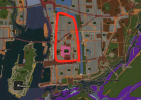I'm actually a fan of having it a maze-maker structure but unfortunately it doesn't mention anything with the giant sized proportions of Lorath and Leng's mazes.
-
The Spring 2023 edition of The Rookery is now out! Take a look to see the latest builds, guides, progress and development updates on the upcoming 1.18.2 switch. You can read it here:
https://indd.adobe.com/view/f943da18-ed77-4d55-845d-fee9bfa14247
You are using an out of date browser. It may not display this or other websites correctly.
You should upgrade or use an alternative browser.
You should upgrade or use an alternative browser.
The Great Empire of the Dawn also used black stone and far more prolifically, such as for the Five Forts. Maybe the base of the Hightower was built by that Empire or craftsmen of it? Maybe the Dawn Empire was far larger than we thought and it had connections as far as Westeros? We don't have any evidence for the Deep Ones being able to build in black stone apart from at the Hightower, and maybe the Hightower actually has no connection to the Deep Ones at all?
In the theory I linked the Five Forts are said to be made by the Deep Ones, who, as the best architects of their time, where asked by the Great Empire of the Dawn to do so. It's still a theory, but to me seems like the most plausible. There's also the fact that many of the structures made out of black stone that predate Valyria are quite close to the coast (with some very notable exceptions).
We don't have any evidence for the Deep Ones being able to build in black stone apart from at the Hightower
Well, the Seastone Chair in the Iron Island is said to be made by them according to maester Theron, and suggested by the floklore. He also points out the similarities between it and the base of the Hightower. The chaotic interior of the structure shows similarities with the mazemakers of Lorath, who are also said to be the builders of it. Interestingly enough, the mazemakers are said to have being destroyed by creatures from the sea (maybe they learned techniques from them before ending their society?). There also another structure made out of black stone, a giant toad statue at the Isle of Toads, near Sothoryos. The people from this island are said to be fish-like. From here the links with the rest of structures are weaker, but not impossible.
I don't think GRRM is never going to "resolve the mystery", as with all this stories and mysterious conections he is emulating how medieval europeans viewed Asia and the reamins of the civilizations before them, and how little they were sure about. The best design we can come with is one that allows several interpretations. That way the maesters discussing makes the most sense.
The only theory I'm not a fan of is the valyrian origin. It isn't impossible, in fact is the most logical, but the Freehold is such a well known part of history across Essos and Westeros that having so many examples of its presence so far away from what its known seems weird. To me it just shows how this structures are vast and show a technology similar to the closest know example to the common people, in this case Valyria. IRL it's quite common that archeological remains are labeled by the locals "roman" or "arab" (in Iberia), even if it corresponds to another period of time. It's the thing they know, so they make asumptions with it. Also several times the disimilarities between the decorations and general aspect between black stone structures and Valyrian architecture is pointed. The only thing that could justify a valyrian origin to me would be it being a way to give Oldtown an equivalent status to the Free Cities, as another "Daughter of Valyria", or some fled dragonlord that for some reason ended up here.
I don't think GRRM is never going to "resolve the mystery", as with all this stories and mysterious conections he is emulating how medieval europeans viewed Asia and the reamins of the civilizations before them, and how little they were sure about. The best design we can come with is one that allows several interpretations. That way the maesters discussing makes the most sense.
The only theory I'm not a fan of is the valyrian origin. It isn't impossible, in fact is the most logical, but the Freehold is such a well known part of history across Essos and Westeros that having so many examples of its presence so far away from what its known seems weird. To me it just shows how this structures are vast and show a technology similar to the closest know example to the common people, in this case Valyria. IRL it's quite common that archeological remains are labeled by the locals "roman" or "arab" (in Iberia), even if it corresponds to another period of time. It's the thing they know, so they make asumptions with it. Also several times the disimilarities between the decorations and general aspect between black stone structures and Valyrian architecture is pointed. The only thing that could justify a valyrian origin to me would be it being a way to give Oldtown an equivalent status to the Free Cities, as another "Daughter of Valyria", or some fled dragonlord that for some reason ended up here.
As the Deep Ones are established to be fictional and/or a rationalisation of sailors in the Dawn Age, we should consider the mazemakers of Lorath as the most likeliest origin. I am thinking Azulujo's tunnel designs and the tunnel patterns under the Red Keep are the way forward
In all situations the Deep Ones are never confirmed to answer prayers or appear. Heck the Deep Ones could be the krakens or leviathans of the Shivering Sea, who soldiers pray to for a smooth krakenless journey*RELEASE THE KRAHKEN*
In all situations the Deep Ones are never confirmed to answer prayers or appear. Heck the Deep Ones could be the krakens or leviathans of the Shivering Sea, who soldiers pray to for a smooth krakenless journey
Last edited:
I think the Starry Sept area should be expanded. Currently, the area is not big enough for the sept, and accompanying buildings mentioned in the OT document. Additionally, it used to be a hub for the Faith, and the area marked out for it just doesn't cut it in my opinion. I've visited a few religious buildings recently, abbeys, priories, cathedrals, and they take up a large amount of space, with a variety of buildings being a part of the greater complex. For example, there are chapter houses, refectories, dormitories, kitchens, storage on top of the septa/septon wings, halls of the silent sisters and faith militant. I think such a significant landmark of the Faith should be given more space in a city like Oldtown. I think there needs to be a significant expansion of the area, especially since there is a sept and septry plotted East of the Starry Sept, which is too big. A sept that size would necessitate the Starry Sept being much bigger, something that is unachievable given the current area.
The other sept was an afterthought. My main concern is that there is not nearly enough space in the sept itself, not the names districts around it. To clarify, I mean the pink area, which is the starry sept and accompanying buildings, needs to be expanded in order to fit the build.
I think with clever usage of space and perspective, the available space should be sufficient and any bigger and we run the risk of making something that feels altogether too large and massive
I mean, according to both the map and the OT document, the entire area I circled in red belongs to the Starry Sept. So, wouldn't it make sense for the accompanying buildings to span the whole area? I don't think the pink section has ever been intended to fit the entire SS complex.
There's a bit of an ambiguity: The district called 'Starry Sept', which lemon points out, does include the sept itself, naturally. It also includes the neighborhood around the sept, so buildings that are unrelated to the sept itself.
The pink area is preliminary, but was intended to indicate the area of the core sept complex when it was layed out. The new subdistrict layout labelled 'Starry Sept' is meant to include the sept complex's core structures, while the adjacent subdistricts (labelled SSA, SSB, SSC and SSD) make up the Starry Sept district and include both secondary structures from the sept complex, but also buildings unrelated to the sept.
To think that the sept might become too small is a valid opinion to have, if the preliminary marker is used for reference. But I'd advise to wait until the Starry Sept server build is being tackled. Like every other server build it will be laid out in wool ahead of time and people will be able to comment on the size and makeup of the layout and any of its features then. It doesn't really make sense to comment on plans that are yet to be made, but the point on size shall be duly noted.
The pink area is preliminary, but was intended to indicate the area of the core sept complex when it was layed out. The new subdistrict layout labelled 'Starry Sept' is meant to include the sept complex's core structures, while the adjacent subdistricts (labelled SSA, SSB, SSC and SSD) make up the Starry Sept district and include both secondary structures from the sept complex, but also buildings unrelated to the sept.
To think that the sept might become too small is a valid opinion to have, if the preliminary marker is used for reference. But I'd advise to wait until the Starry Sept server build is being tackled. Like every other server build it will be laid out in wool ahead of time and people will be able to comment on the size and makeup of the layout and any of its features then. It doesn't really make sense to comment on plans that are yet to be made, but the point on size shall be duly noted.
On the south east septry: The pink heptagonal shape with the seven pointed star is a yard, not a sept.
As the Deep Ones are established to be fictional and/or a rationalisation of sailors in the Dawn Age, we should consider the mazemakers of Lorath as the most likeliest origin. I am thinking Azulujo's tunnel designs and the tunnel patterns under the Red Keep are the way forward
In all situations the Deep Ones are never confirmed to answer prayers or appear. Heck the Deep Ones could be the krakens or leviathans of the Shivering Sea, who soldiers pray to for a smooth krakenless journey*RELEASE THE KRAHKEN*
The Deep Ones is an idea put forth by a Maester who was born on the Iron Islands (Theron Pyke) and compares the Hightower base and the Seastone chair.
And the deep ones are very much established as potentially real. The unusual features of the people of the Sisters in the Vale, Toad Isle and the Thousand Isles suggest that Theron's ideas and the Cracklaw legends of the 'Squishers' line up. It occurs far too often over the known world for it to just be a rationalisation of sea raiders. They also have been compared to Lorathi mazes by Maester Quillon but there is no mention of the larger than human height or descending deep into the earth like the mazes of Leng or Lorassyon. The Hightower base stands apart from these suggestions in material i.e. HT base - fused black stone, maze makers of Lorath - carved stone, Lengii - stone has been reduced to ruins on the surface therefore not black stone, Toad Isle/Seastone chair - oily black stone.
However, I like the idea of uncomfortable geometry to the shape, making it feel vaguely inhuman will create that atmosphere of mystery/tin foil hat feeling. However, maybe there should be inspiration from the descriptions of Leng to give possible credit to Quillon's theory?
Leng's history goes back almost as far as that of Yi Ti itself, but little and less of it is known west of the Jade Straits. There are queer ruins in the depths of the island's jungle: massive buildings, long fallen, and so overgrown that rubble remains above the surface...but underground, we are told, endless labyrinths of tunnels lead to vast chambers, and carved steps descend hundreds of feet into the earth. No man can say who might have built these cities, or when. They remain perhaps the only remnant of some vanished people.
Oldtown inspo extras to help lock down our style when outfitting buildings:
Exteriors: Interiors:
Of course, Islamic influence and gold panelling/trimming is not welcome in Oldtown's style. But the architecture of those pictures is still valid
I am desperate to apply so I can be part of this, will try to do so tomorrow!
Exteriors: Interiors:
Of course, Islamic influence and gold panelling/trimming is not welcome in Oldtown's style. But the architecture of those pictures is still valid
I am desperate to apply so I can be part of this, will try to do so tomorrow!
Last edited:
Hi! So... I don't know why I decided to detriment my brain by doing this, but, I collected inspiration photos, descriptions and information of houses I believe have at least 1 aspect to them that can be of inspiration for a house in Oldtown. I was lucky to discover the arquitectural archive of the French Ministry of Culture (https://www.pop.culture.gouv.fr/search/mosaic?base=["Patrimoine architectural (Mérimée)"]&image=["oui"]), and by using their filter options I compiled 3 albums of images, the first comprising of 89 images of 11th and 12th century examples, the second of 80 images of the conclusion of the 12th century and 13th century examples and the last one of 203 images of 14th and 15th century examples.
Things to keep in mind:
-All the examples can be found in the southern half of France, the majority coming from the Nouvelle-Aquitaine and Occitanie regions (the Provence region had close to 0 medieval houses), although some other regions could have examples that can be used as inspiration for Oldtown, for consistency sake and my sake (these 2 regions already amount to hundreds of images, more would be a nightmare) I sticked primarily with these 2.
-This is an INSPIRATION compilation, these are not the strict requirements and sole styles that can be used in Oldtown. Medieval architecture specially in the late years is very connected to religious imagery and sculpture motifs, since Westeros isn't catholic, the design elements and some other features can and should be different, so no the fact that there's some image showing a sculpture of a saint or a painted wall with christian motifs doesn't mean I'm trying to say Oldtown or Westerosi architecture should have such imagery.
-And lastly, these are by no means fun inspiration albums, they are dare-I-say quite exhaustive and boring for the most part, a lot of images are in black and white since a lot of the buildings shown were demolished or fell into ruins, and a lot of buildings are similar to each other or have little to offer. So the main objective here is to help others understand not only how they can build x house but to differentiate the centuries of medieval French architecture.
As for aspects that I found/discovered in this endeavour, the main thing I have noticed is that iregular and chaotic constructions aren't a product of medieval architecture in itself but of additions made to buildings. Weird nooks and side buildings and other features weren't planned in the main beginning construction phase, on contrary, most buildings were fairly orderly and generally presented a square or rectangle plan, being the square plan most favoured in the southern half of France.
Another aspect is the fact that until the 15th century onwards, the quality of construction and it's adornments and detailing weren't reserved solely for the higher classes. You would find adorned lintels, carved columns and even painted walls and wood carvings in middle to low middle class houses, of course they wouldn't even reach half of the mastery that the higher classes could afford, but decoration was still somewhat prevalent. Even in lower class rural houses that had an abbey as their sovereign could have sophisticated architecture for their class (see the "Houses of the fields" segment towards the end of this chapter of the Reasoned dictionary of French architecture from the 11th to the 16th century https://fr.m.wikisource.org/wiki/Dictionnaire_raisonné_de_l’architecture_française_du_XIe_au_XVIe_siècle/Maison# where they describe the typical rural peasant houses).
P.S.:The site was all in French so I used the safari option to translate it to English, so if there's any phrase or word that sounds odd is because it was automatically translated, and some of it can be wrong.
All in all I hope these albums help you in any way.
Thank you for reading,
Seri
Things to keep in mind:
-All the examples can be found in the southern half of France, the majority coming from the Nouvelle-Aquitaine and Occitanie regions (the Provence region had close to 0 medieval houses), although some other regions could have examples that can be used as inspiration for Oldtown, for consistency sake and my sake (these 2 regions already amount to hundreds of images, more would be a nightmare) I sticked primarily with these 2.
-This is an INSPIRATION compilation, these are not the strict requirements and sole styles that can be used in Oldtown. Medieval architecture specially in the late years is very connected to religious imagery and sculpture motifs, since Westeros isn't catholic, the design elements and some other features can and should be different, so no the fact that there's some image showing a sculpture of a saint or a painted wall with christian motifs doesn't mean I'm trying to say Oldtown or Westerosi architecture should have such imagery.
-And lastly, these are by no means fun inspiration albums, they are dare-I-say quite exhaustive and boring for the most part, a lot of images are in black and white since a lot of the buildings shown were demolished or fell into ruins, and a lot of buildings are similar to each other or have little to offer. So the main objective here is to help others understand not only how they can build x house but to differentiate the centuries of medieval French architecture.
As for aspects that I found/discovered in this endeavour, the main thing I have noticed is that iregular and chaotic constructions aren't a product of medieval architecture in itself but of additions made to buildings. Weird nooks and side buildings and other features weren't planned in the main beginning construction phase, on contrary, most buildings were fairly orderly and generally presented a square or rectangle plan, being the square plan most favoured in the southern half of France.
Another aspect is the fact that until the 15th century onwards, the quality of construction and it's adornments and detailing weren't reserved solely for the higher classes. You would find adorned lintels, carved columns and even painted walls and wood carvings in middle to low middle class houses, of course they wouldn't even reach half of the mastery that the higher classes could afford, but decoration was still somewhat prevalent. Even in lower class rural houses that had an abbey as their sovereign could have sophisticated architecture for their class (see the "Houses of the fields" segment towards the end of this chapter of the Reasoned dictionary of French architecture from the 11th to the 16th century https://fr.m.wikisource.org/wiki/Dictionnaire_raisonné_de_l’architecture_française_du_XIe_au_XVIe_siècle/Maison# where they describe the typical rural peasant houses).
P.S.:The site was all in French so I used the safari option to translate it to English, so if there's any phrase or word that sounds odd is because it was automatically translated, and some of it can be wrong.
All in all I hope these albums help you in any way.
Thank you for reading,
Seri
Last edited:

The University (Kingkiller) and The Citadel (ASOIAF)
The University (Kingkiller) and The Citadel (ASOIAF) - kingkiller.md
A document sorta riffing about how the Citadel's interiors could take cues from the University in Kingkiller Chronicles.
The usual... "Take it or leave it" and "this is not official" etc
What is the climate and vegetation of Oldtown and its area? As far as I know it was stayed that it was somewhat mediterranean, but the area, at the same time, uses plains biome instead of mushroom island (not that this excludes the possibility of been Mediterranean). Any iconic trees or plants to the city scape or the forests at the outskirts of the town? What would be an equivalent in real life in terms of climate or vegetation?
Oldtown has a climate similar to the Mediterranean, experiencing warm to hot summers and mild winters. We opted for a plains biome rather than mushroom island in order to set it apart from the Westerlands. With similar and at times even the same inspiration and references as the Westerlands, keeping both regions unique has been one of our main challenges. If people think this is an error, we're open to discuss it.What is the climate and vegetation of Oldtown and its area? As far as I know it was stayed that it was somewhat mediterranean, but the area, at the same time, uses plains biome instead of mushroom island (not that this excludes the possibility of been Mediterranean). Any iconic trees or plants to the city scape or the forests at the outskirts of the town? What would be an equivalent in real life in terms of climate or vegetation?
While we have a fairly good idea of how we want the city to be, we plan to rely much more on the creativity and knowledge of team leaders with regards of the types of plants and trees natural to the environment (in other words, we know jackshit about nature). We did make an effort to come up with a logical economy for the city, and by extension with a number of plants found in the environment. Cereals, grapes, olives, figs and the kermes oak are plants we have named to be found around Oldtown based on the economies of medieval Constantinople, Florence and Rome.
In addition, we have canon indicating the environment is fit to grow apples, melons, peaches, pomegrenates and nightshade.
Oldtown could have hemp fields in the surroundings, they'd use a lot of ropes for everything (especially trade ships).
Hey team!
It’s been a while since I’ve last checked out anything Oldtown related, which is precisely the reason why I stepped down as project lead, but earlier this week I finally took some time to check out all the new and exciting stuff happening in the city.
I think great work is being put out, but there are two things I noticed that concern me; development at (mostly finished portions of) the city walls and changes in the setup of city districts compared to descriptions in the Oldtown document. It’s going to be a long read, so please bear with me.
City Walls
I noticed this portion of the walls, which was adequately finished in December 2019, has been removed and replaced with new (WIP) sections including a new gate. I must admit I am a bit upset this section has been redone for a number of reasons.
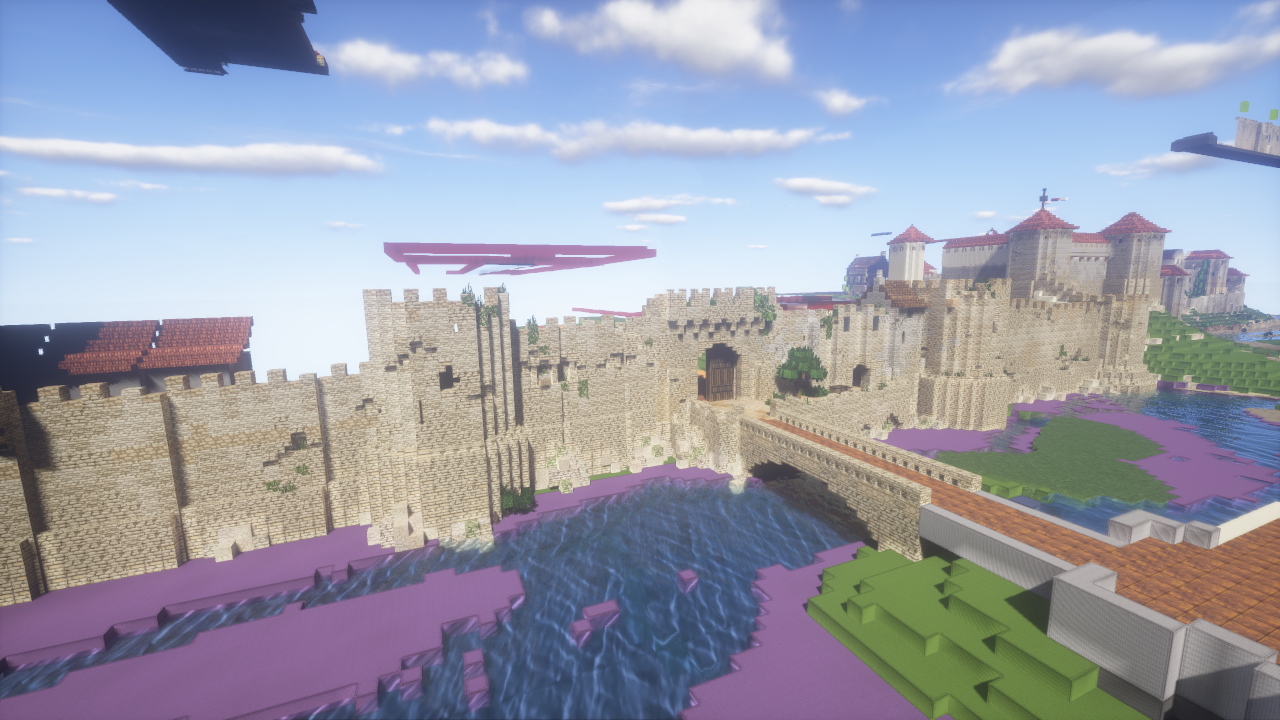
The Jaeger gate as it was in 2019-2022
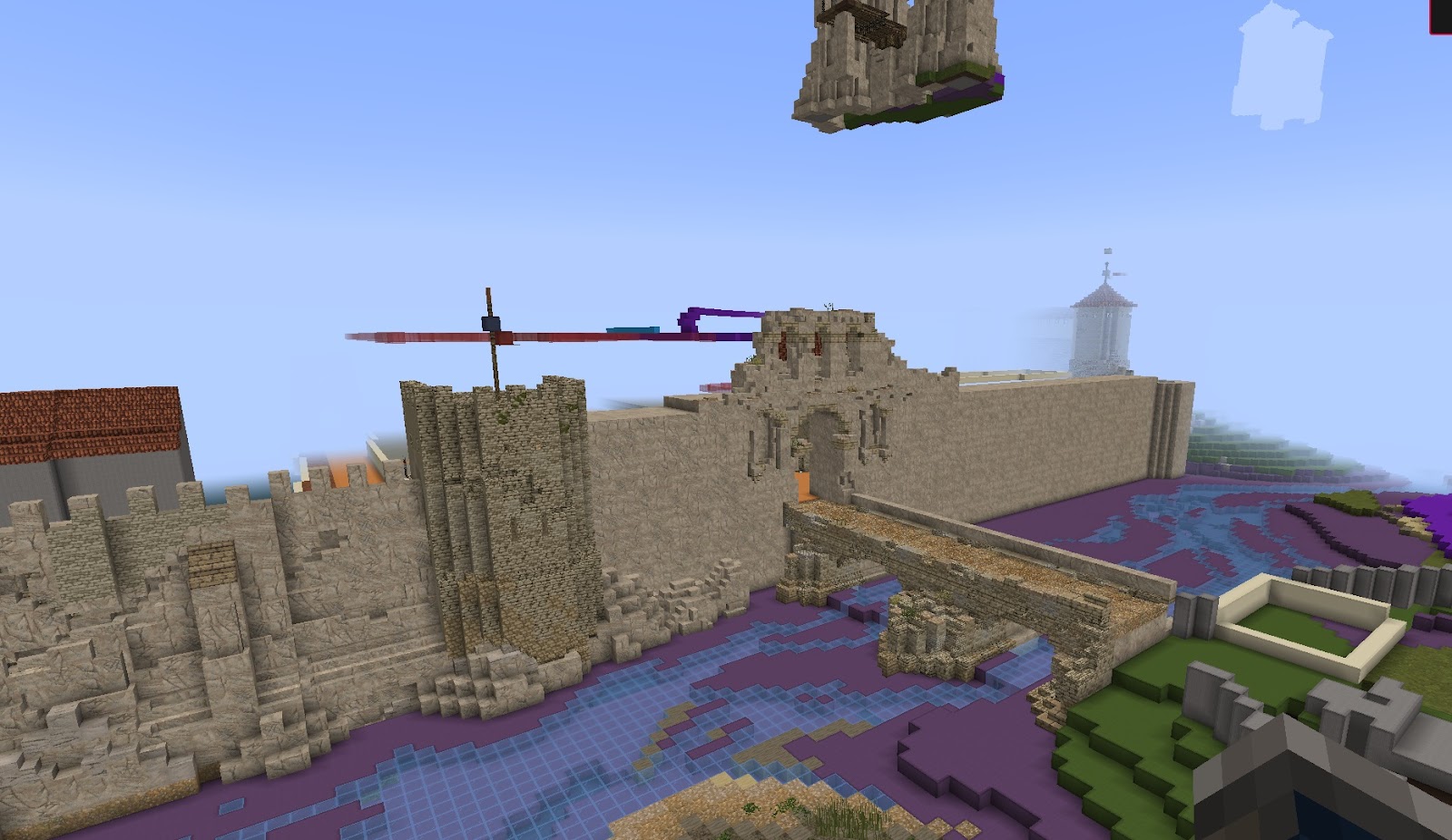
The Jaeger gate now (I know it looks worse due to the lack of shader)
First of all, this section was a perfect match with our vision for not only the defences but the aesthetics and general feel for the entire city. During both Dutchguard’s leadership of the city’s defence team as well as my short tenure as it, this portion of the wall has been upheld as the gold standard for the defences in terms of simple elegance, proportions, palette, shape and state of disrepair.
Secondly, this small section of wall was for all intents and purposes finished or nearly so. Redoing this part of the wall was entirely unnecessary, especially considering the city walls north, east and west of the city were and remain in an unfinished state. In fact, the rest of the city’s defences are still in the same state as when I posted this update regarding the city’s defences, which for some reason has been removed from both the discord and the forums, on June 27th 2022. This same update pinpoints the exact portion of wall that has now been redone to be exempted from being changed.
Thirdly, the new style of the replacing gate seems to be heavily inspired by Roman architecture. Westeros never had a Roman Empire with Greek inspired architecture, and while we included a limited amount of Roman architecture in our inspiration, we made an effort to focus on solely medieval architecture wherever possible. The style description of the oldest architecture in Oldtown is described as the following;
This description matches more or less with the description of early Romanesque architecture which emerged after the fall of the Roman Empire, or Roman architecture without the detailed columns, arches and statues they are known for. At no other place have we used Roman architecture to depict the architecture of the First Men.
Additionally, the circumstances under which the oldest walls of Oldtown were built do not make it likely a lot of effort would have been put into making the gates fancy. From the canon document:
Oldtown was not having a good time when it build the first stone walls. It had been sacked thrice and had seen at least three quarters of its population sold into slavery. The drive to build stronger stone walls would have been extremely high, enough so that the effort beggaring the city for decades was seen as necessary.
Fourthly, the shape of the gate implies it is partially collapsed. Although the gate would be old, since it’s still in regular use it would be maintained to such a degree where even if it would collapse, the damage would be fixed. This is a setup of a gate in the modern age, where city walls have been obsolete for at least 500 years and the only reason it’s still standing is because nobody bothered to invest in removing the structure.
Fifthly, and although I realise this is still work in progress, the old gate featured a postern gate which seems to be lost in the new design as well.
I hope the original section is still out there somewhere so we can roll back these changes.
Setup of Caulkburn
First of all, I want to make it clear I’m not expecting major changes here. The district is mostly finished and changing anything in its current setup would be unreasonable. However, I do want to point out there are some discrepancies with the descriptions in the Oldtown document which will ultimately have a wider effect on the perception of the rest of the city.
The Oldtown document is the result of years of team discussions, research and planning, all condensed into a relatively short booklet of 55 pages in order to communicate the plans to the server as clearly yet short as possible. However, behind every sentence in the document are several pages worth of information, discussions, correlations and considerations that are not clearly communicated in the document, but do form the basis of the plans.
Naturally, team Oldtown is free to give their own interpretation to the city and the Oldtown document, but please realise deviating too much from the document comes with the risk of losing the realism and cohesiveness for which we prepared for so many years upfront.
Now to the point, the key features at Caulkburn are described in several chapters and subchapters in the document. Key aspects are described as following:
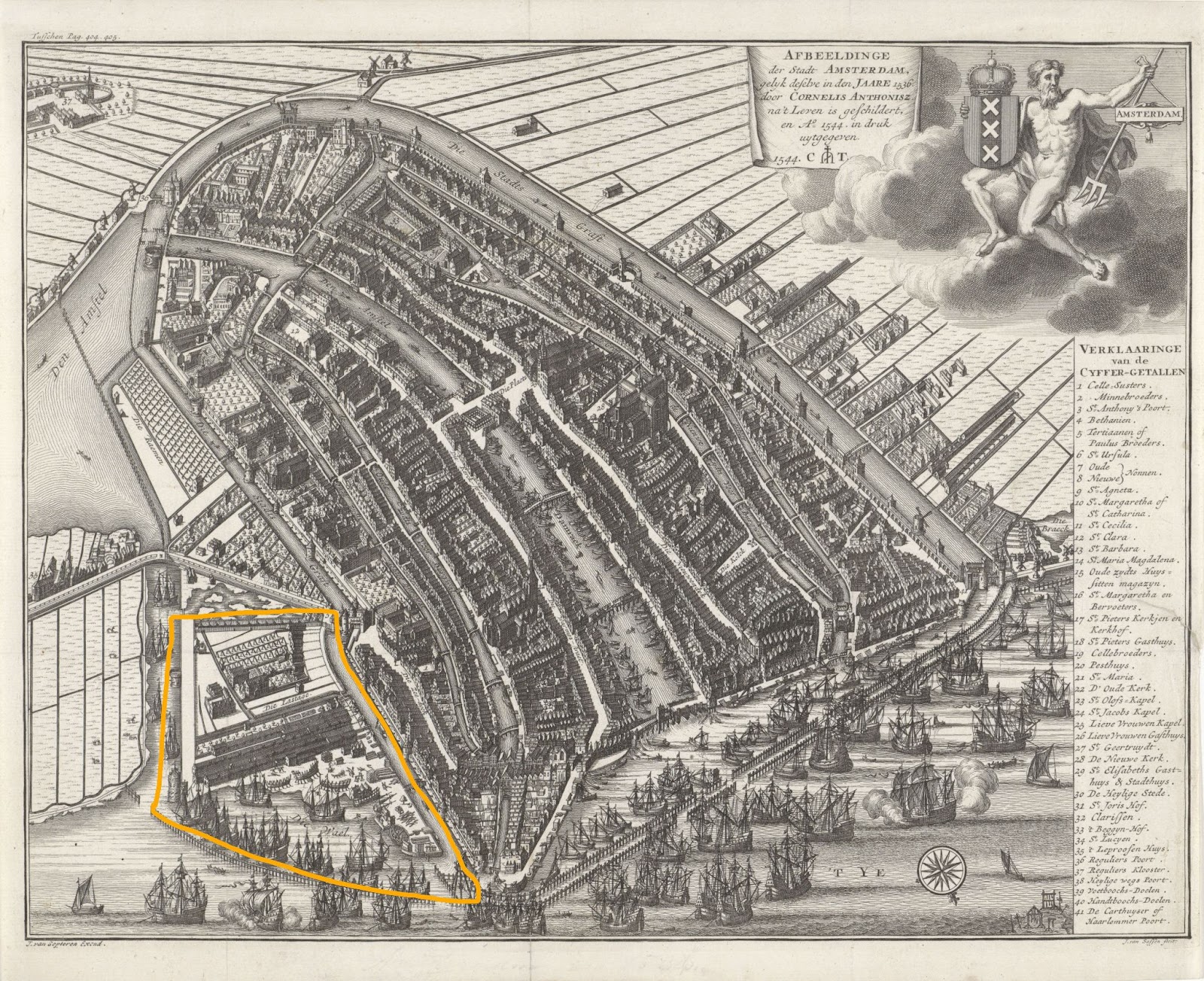
The Lastage in Amsterdam. The ropewalks are several city blocks long.
Trade would have been conducted elsewhere, and Oldtown has been planned similarly. There are harbours intended for trade along the honeywine at AG-D, SK-D, CH-G and even on Battle Island. Smaller vessels can also enter BB-G and BB-H. CU-A on the other side of the Whispering Sound is intended as a fishing harbour. These harbours are all closer to the markets where the goods transported on the ships would come from or go to.
As for the sprawl, Oldtown is designed to have experienced stagnated growth in stark contrast to Kingslanding, which has already outgrown its defences. For this reason, most of the sprawl we usually make at our cities and towns will be within the city’s defences at Oldtown, simply because the city has not grown as much as expected when they build the walls. We planned hints to earlier walls around the districts of Auldwall and Seven Shrines to indicate the city was once smaller and has grown during dedicated expansions, as well as villages that have grown into the expanding city such as Mearley, Arl’s Quarter and Millnthorpe. There is no reason to expand the city in the manner it is now by building the walls around Caulkburn, simply because there is plenty of space within the defences already existing; it’s like building an extra bedroom while you already have an empty bedroom elsewhere in the house.
The footprint we have given to (walled) Oldtown is slightly larger than Kingslanding, despite the city being less populous than the latter by canon; another intentional hint to the stagnated growth of the city. Further expanding the city by converting planned sprawl or even adding sprawl will quickly result in Oldtown becoming more populous than our Kingslanding, especially with Oldtown’s use of insulae.
Building materials at Oldtown are primarily stone as per canon. This is not uncommon for (late) medieval towns and cities. I think most of us have heard of the great fire of London, or other huge fires in towns or cities in their own environment. Fire was a massive threat to towns and cities, and many implemented laws prohibiting people to build with materials that are susceptible to fire such as wood, wattle and thatch within the city walls. Our assumption is that similar laws exist at Oldtown. However, since Caulkburn is designed to be outside of the city, these laws would not apply for buildings there. Extensive use of timber and thatch in Caulkburn (and other sprawl areas) would have not only made for an interesting feature by portraying the use of stone within Oldtown as not simply a regional thing, it would also give these areas a unique and refreshing aesthetic to set them apart from the city itself.
Again, I don’t think the district looks necessarily bad (it looks quite good) nor do I expect major changes to be made. I just want to point out and explain that there is quite a lot of thought behind the handful of sentences used to describe the many aspects of Oldtown in the document, and that most of the descriptions are related to other facets of the city that might not be immediately noticeable.
Although I’m no longer part of the team in charge of Oldtown, as the main author of the Oldtown document I am still more than willing and capable to advise on its contests and the course of this project if aspects remain unclear or if there are desires to deviate from the plans.
Kind Regards,
EStoop
It’s been a while since I’ve last checked out anything Oldtown related, which is precisely the reason why I stepped down as project lead, but earlier this week I finally took some time to check out all the new and exciting stuff happening in the city.
I think great work is being put out, but there are two things I noticed that concern me; development at (mostly finished portions of) the city walls and changes in the setup of city districts compared to descriptions in the Oldtown document. It’s going to be a long read, so please bear with me.
City Walls
I noticed this portion of the walls, which was adequately finished in December 2019, has been removed and replaced with new (WIP) sections including a new gate. I must admit I am a bit upset this section has been redone for a number of reasons.
The Jaeger gate as it was in 2019-2022
The Jaeger gate now (I know it looks worse due to the lack of shader)
First of all, this section was a perfect match with our vision for not only the defences but the aesthetics and general feel for the entire city. During both Dutchguard’s leadership of the city’s defence team as well as my short tenure as it, this portion of the wall has been upheld as the gold standard for the defences in terms of simple elegance, proportions, palette, shape and state of disrepair.
Secondly, this small section of wall was for all intents and purposes finished or nearly so. Redoing this part of the wall was entirely unnecessary, especially considering the city walls north, east and west of the city were and remain in an unfinished state. In fact, the rest of the city’s defences are still in the same state as when I posted this update regarding the city’s defences, which for some reason has been removed from both the discord and the forums, on June 27th 2022. This same update pinpoints the exact portion of wall that has now been redone to be exempted from being changed.
Thirdly, the new style of the replacing gate seems to be heavily inspired by Roman architecture. Westeros never had a Roman Empire with Greek inspired architecture, and while we included a limited amount of Roman architecture in our inspiration, we made an effort to focus on solely medieval architecture wherever possible. The style description of the oldest architecture in Oldtown is described as the following;
Oldtown.doc chapter 4. Architecture; Uthor’s Oldtown [OT I]
Features include very little intricate detailing, small windows and doors and thick walls in the larger structures. Residences are usually rather low, but can occasionally have a storey built on top in a differing style or material.
This description matches more or less with the description of early Romanesque architecture which emerged after the fall of the Roman Empire, or Roman architecture without the detailed columns, arches and statues they are known for. At no other place have we used Roman architecture to depict the architecture of the First Men.
Additionally, the circumstances under which the oldest walls of Oldtown were built do not make it likely a lot of effort would have been put into making the gates fancy. From the canon document:
A World of Ice and Fire, Oldtown
For thousands of years thereafter, his descendants ruled Oldtown and the lands of the Honeywine as kings, and ships from the world over came to their growing city to trade. As Oldtown grew wealthy and powerful, neighboring lords and petty kings turned covetous eyes upon its riches, and pirates and reavers from beyond the seas heard tales of its splendors as well. Thrice in the space of a single century the city was taken and sacked, once by the Dornish king Samwell Dayne (the Starfire), once by Qhored the Cruel and his ironmen, and once by Gyles I Gardener (the Woe), who reportedly sold three-quarters of the city's inhabitants into slavery, but was unable to breach the defenses of the Hightower on Battle Isle.
The wooden palisades and ditch that had protected the city therefore having so obviously been proved inadequate, the next King of the High Tower, Otho II, spent the best part of his reign surrounding Oldtown with massive stone walls, thicker and higher than any seen in Westeros to this point. This effort beggared the city for three generations, it is written, but such was their strength that later reavers and would be conquerors were persuaded to seek for plunder elsewhere, and those who did presume to attack Oldtown did so to no avail.
Oldtown was not having a good time when it build the first stone walls. It had been sacked thrice and had seen at least three quarters of its population sold into slavery. The drive to build stronger stone walls would have been extremely high, enough so that the effort beggaring the city for decades was seen as necessary.
Fourthly, the shape of the gate implies it is partially collapsed. Although the gate would be old, since it’s still in regular use it would be maintained to such a degree where even if it would collapse, the damage would be fixed. This is a setup of a gate in the modern age, where city walls have been obsolete for at least 500 years and the only reason it’s still standing is because nobody bothered to invest in removing the structure.
Fifthly, and although I realise this is still work in progress, the old gate featured a postern gate which seems to be lost in the new design as well.
I hope the original section is still out there somewhere so we can roll back these changes.
Setup of Caulkburn
First of all, I want to make it clear I’m not expecting major changes here. The district is mostly finished and changing anything in its current setup would be unreasonable. However, I do want to point out there are some discrepancies with the descriptions in the Oldtown document which will ultimately have a wider effect on the perception of the rest of the city.
The Oldtown document is the result of years of team discussions, research and planning, all condensed into a relatively short booklet of 55 pages in order to communicate the plans to the server as clearly yet short as possible. However, behind every sentence in the document are several pages worth of information, discussions, correlations and considerations that are not clearly communicated in the document, but do form the basis of the plans.
Naturally, team Oldtown is free to give their own interpretation to the city and the Oldtown document, but please realise deviating too much from the document comes with the risk of losing the realism and cohesiveness for which we prepared for so many years upfront.
Now to the point, the key features at Caulkburn are described in several chapters and subchapters in the document. Key aspects are described as following:
Oldtown.doc chapter 5. Layout & districts; The districts of Oldtown
These districts are located outside the city walls and mainly feature docks and industry. While buildings in the city are commonly made of stone, wood is much more common in the sprawl along the Whispering Sound.
Districts in the Whispering Sound sprawl are Caulkburn and Undercroft.
In short, the district is set up as follows:Oldtown.doc chapter 5. Layout & districts; Caulkburn
Caulkburn is located outside of the city walls on the eastern bank of the Whispering Sound, and is known for its many shipyards and workshops that make the air thick with smoke. Few people actually live in this disctrict, but the few who do are amongst the poorest of the city.
Ships lay anchor in the Whispering Sound or dock in the large harbour at Caulkburn for repairs. Goods are produced further inland, such as sails, ropes, lumber but also iron and steel, glass and leather.
Features
- Wharves, workshops where boats, galleys and ships are made.
- Lots of industry that is not desired in the city.
- Lots of industry that are focussed on boatbuilding.
- It is sprawl outside of the city itself.
- It is stylistically different from the city; wood is a much more common material.
- It is primarily heavy and large industry, which in turn are described to have large workyards. There are few residences, and those present are extremely poor.
- It is focussed on ship building and repairs, especially around the harbour.
- It’s more of an extension of the city rather than sprawl, with heavy land and coastal defences as well as large gatehouses and a dry moat. There are two subdistricts planned as sprawl, even though the whole district was intended to be sprawl.
- It’s stylistically the same as a district within the city would be. None of the buildings are made of wood (chapter 4. Architecture; Styles & block usage explains OT and Reach timber frame are regarded as stone).
- Although there is some heavy and large industry, large workyards are rare. There is quite a focus on residency within the district; more than half the buildings are residential, there is a sept, several market halls (I think) and numerous shops.
- Most of the harbour features warehouses and generic industry, despite this harbour being specifically mentioned to be intended for building and repairing boats and ships. I think it’s vastly underestimated just how large the industry supporting naval trade really should be, and how polluting these industries were. You’re not going to get even mediocre garum from a factory right next to the place where they are retarring the hull of a ship.
The Lastage in Amsterdam. The ropewalks are several city blocks long.
Trade would have been conducted elsewhere, and Oldtown has been planned similarly. There are harbours intended for trade along the honeywine at AG-D, SK-D, CH-G and even on Battle Island. Smaller vessels can also enter BB-G and BB-H. CU-A on the other side of the Whispering Sound is intended as a fishing harbour. These harbours are all closer to the markets where the goods transported on the ships would come from or go to.
As for the sprawl, Oldtown is designed to have experienced stagnated growth in stark contrast to Kingslanding, which has already outgrown its defences. For this reason, most of the sprawl we usually make at our cities and towns will be within the city’s defences at Oldtown, simply because the city has not grown as much as expected when they build the walls. We planned hints to earlier walls around the districts of Auldwall and Seven Shrines to indicate the city was once smaller and has grown during dedicated expansions, as well as villages that have grown into the expanding city such as Mearley, Arl’s Quarter and Millnthorpe. There is no reason to expand the city in the manner it is now by building the walls around Caulkburn, simply because there is plenty of space within the defences already existing; it’s like building an extra bedroom while you already have an empty bedroom elsewhere in the house.
The footprint we have given to (walled) Oldtown is slightly larger than Kingslanding, despite the city being less populous than the latter by canon; another intentional hint to the stagnated growth of the city. Further expanding the city by converting planned sprawl or even adding sprawl will quickly result in Oldtown becoming more populous than our Kingslanding, especially with Oldtown’s use of insulae.
Building materials at Oldtown are primarily stone as per canon. This is not uncommon for (late) medieval towns and cities. I think most of us have heard of the great fire of London, or other huge fires in towns or cities in their own environment. Fire was a massive threat to towns and cities, and many implemented laws prohibiting people to build with materials that are susceptible to fire such as wood, wattle and thatch within the city walls. Our assumption is that similar laws exist at Oldtown. However, since Caulkburn is designed to be outside of the city, these laws would not apply for buildings there. Extensive use of timber and thatch in Caulkburn (and other sprawl areas) would have not only made for an interesting feature by portraying the use of stone within Oldtown as not simply a regional thing, it would also give these areas a unique and refreshing aesthetic to set them apart from the city itself.
Again, I don’t think the district looks necessarily bad (it looks quite good) nor do I expect major changes to be made. I just want to point out and explain that there is quite a lot of thought behind the handful of sentences used to describe the many aspects of Oldtown in the document, and that most of the descriptions are related to other facets of the city that might not be immediately noticeable.
Although I’m no longer part of the team in charge of Oldtown, as the main author of the Oldtown document I am still more than willing and capable to advise on its contests and the course of this project if aspects remain unclear or if there are desires to deviate from the plans.
Kind Regards,
EStoop
I have some feedback about the existing throne room and mural on the base floor of the Hightower. I understand that may not be the finished product but I'll get some screenshots here so we can keep track of change.
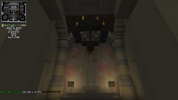
This throne is OK-ish for a First Men stone carved vibe but it's not really a functional throne hall. Its not just the size either. It lacks the amenities of a major house that would hold court too.
A picture says a thousand words, and this is some of the other tests I've liked:

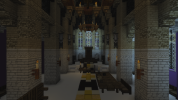
The truth is that 32m/96ft of floor space could very well limit the Hightower build to specialising each floor and keeping wood, armor and banners, etc at the base. The Stone Drum at Storm's End takes the same approach - tiering larger rooms and functions like a cake. E.g. throne hall, the dining room and kitchens on top of each other.

This throne is OK-ish for a First Men stone carved vibe but it's not really a functional throne hall. Its not just the size either. It lacks the amenities of a major house that would hold court too.
A picture says a thousand words, and this is some of the other tests I've liked:


The truth is that 32m/96ft of floor space could very well limit the Hightower build to specialising each floor and keeping wood, armor and banners, etc at the base. The Stone Drum at Storm's End takes the same approach - tiering larger rooms and functions like a cake. E.g. throne hall, the dining room and kitchens on top of each other.
Last edited:
Tbf the Hightowers could have made a new throne in the ten trillion years they’ve existed
Share:











